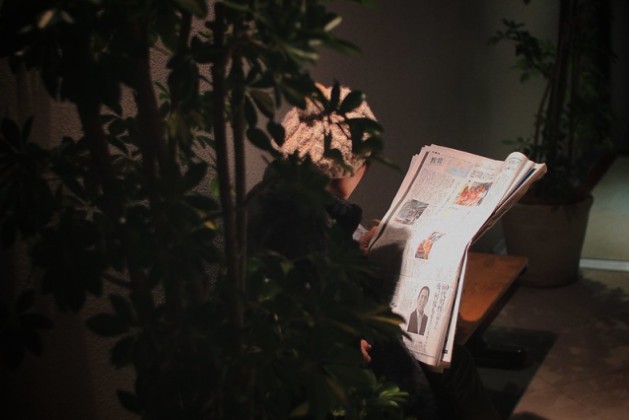
Photo (cc) 2014 by MIKI Yoshihito
I’m sure I’ll be writing a lot in the weeks and months ahead about whether and how government should provide a boost to local journalism — in crisis before the COVID-19 pandemic, and now on its knees.
Recently I reviewed Victor Pickard’s new book, “Democracy without Journalism?,” which is, among other things, a call for public assistance. Pickard’s argument for fundamental media reform and increased public investment in journalism was relevant before the pandemic, and is even more so now.
Today I want to touch briefly on a back-and-forth between Politico media columnist Jack Shafer and Mike Blinder, publisher of Editor & Publisher, a leading trade magazine for the newspaper business. Shafer is against a government bailout, arguing that newspapers have been in decline for decades, and that the pandemic is merely speeding up the end game. Blinder, naturally, is for public assistance. First, a bit of Shafer:
It might make sense for the government to assist otherwise healthy companies — such as the airlines — that need a couple of months of breathing space from the viral shock to recover and are in a theoretical position to repay government loans sometime soon. But it’s quite another thing to fling a life buoy to a drowning swimmer who doesn’t have the strength to hold on. Newspapers are such a drowning industry.
Perhaps the problem with Shafer is that he still thinks a newspaper is a singular paper product as he lives in a binary world where you either work for a newspaper or a “pure play” digital product like Politico or Slate, where he previously worked. Come on, Jack, you know better. Just because news publishers proudly keep the word “paper” in their branding does not mean that the end product must be printed on pulp.
Although I disagree with some of what Shafer says, he does make one good point — that it would be outrageous to reward chain newspaper owners that have been hollowing out their coverage for years so they could squeeze out a few drops of profit for their hedge-fund owners and corporate shareholders. At the very least, I wouldn’t want to see any money go to Alden Global Capital’s MediaNews Group or to Gannett unless it is matched by investments in journalism that those companies have, up to this point, shown no inclination to make.
We should also acknowledge that indirect government funding is already propping up a lot of the local and regional news infrastructure. Nonprofit media such as public broadcasters and local digital news organizations like the New Haven Independent, Voice of San Diego, MinnPost and Texas Tribune thrive in part because of tax advantages that amount to a government subsidy. (Public broadcasters receive some direct government funding, too.) Major newspapers may take the same route in the years ahead, with The Salt Lake Tribune leading the way.
My own view is that local news organizations, including newspapers, should be eligible for government bailout money just as other businesses are. As Shafer notes, there is always the problem of journalistic independence when the government gets involved. But structures can be set up that insulate news organizations from interference.
Former NPR chief executive Vivian Schiller tells Shafer that the current governing structure for NPR has created an “untenable structure for supporting independent journalism.” But even though NPR often strikes me as overly cautious and deferential to power, it is also our leading source of free, high-quality journalism.
We need a variety of different business models for local news — for-profit, nonprofit, cooperative and even volunteer. At the moment, most local news is based on the for-profit model, and that’s what’s in danger of being destroyed by the pandemic.
Right now, newspapers — print and digital — need a bailout. We can worry about what sort of relationship the government should have with the news business once the crisis has abated.
Talk about this post on Facebook.
Discover more from Media Nation
Subscribe to get the latest posts sent to your email.
